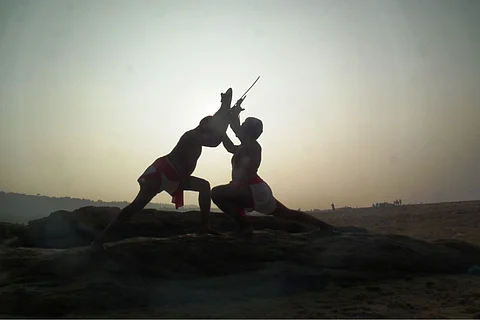

“It is an illusion that photos are made with the camera… they are made with the eye, heart, and head.” These are said to be the words of Henri Cartier-Bresson, a renowned French artist and photographer. They resonate with us as we celebrate World Photography Day today.
On August 19, we do not only commemorate the art of photography but also reflect upon the extraordinary voyage of technological advancement spanning the last 183 years, tracing back to the introduction of one of the earliest cameras by Joseph Nicéphore Niépce and Louis Daguerre in 1837. Amidst a global shift from print media towards the vast realms of social media and digital online platforms, and the interweaving of print, visual, and social media, this day grows more and more significant with the near omnipresence of smartphone cameras.
Each photograph we encounter unveils different layers of meaning. Photography seamlessly merges art, technology, and creativity, weaving together a narrative that spans time and emotions. Delving into our personal photos takes us on an inadvertent journey through our own history, while news imagery offers glimpses into the evolving dynamics of the world – its thoughts, powers, virtues, vices, empathy, and love, from celebrations to revolutions. World Photography Day stands not just as an homage to the technological leaps that have transformed how we capture and share moments, but also as a celebration of the artistic vision that every lens brings to life.
A photograph from the Arctic by KV Ravisankar
On this day, we reflect on the evolution of photographers – a group once rare and elusive, but now encompassing individuals from all walks of life. In a world where time is fleeting, photography endures as a timeless art form. Even in the early 21st century, amidst the surge of technology, science, and communication, each photograph and its creator occupy a distinctive space and role. From the era of film-based photography and heavy, manual twin-lens reflex cameras, to today’s sleek and efficient mirrorless digital counterparts, the mantle of photography has been embraced by all.
Photography remains a rare intersection of art, creativity, and technology. Amidst the dynamic shifts of the modern world, where media, social platforms, and smartphones hold an unprecedented influence, we stand as truly digital beings. From Aristotle's ‘Camera Obscura’ in the 4th century BC to today's mirrorless cameras, the journey underscores the profound impact of the technology of photography on our lives – a technology that has become an inseparable part of our daily existence.
August 19 pays homage to the invention of the form of photography called daguerreotype – a turning point crafted by Louis Daguerre and Joseph Nicéphore Niépce. On January 9, 1839, the daguerreotype was officially recognised by the French Academy of Sciences. Seven months later, on August 19, 1839, the French government took out a patent for the device. Daguerre called the invention "a gift to the world" and made it freely available to all. It opened up photography to the masses, fostering various photographic forms and nurturing countless photographers worldwide.
Chinese fishing nets in Kerala's Alappuzha/By KV Ravisankar
Within the vast realm of photography's evolution, space and astrophotography stand as a wondrous chapter — from people taking long exposure pictures of the mesmerising night sky to the Hubble Space Telescope, a marvel of human ingenuity which unveiled cosmic vistas that redefined our existence.
Echoing Carl Sagan's poignant words on the famous "pale blue dot" photograph (a photograph of Earth taken in 1990 by NASA’s Voyager 1 at a distance of six billion kilometres from the sun), each Hubble image encapsulates our cosmic insignificance and individual profoundness against the universe's canvas. Now, the James Webb Space Telescope (JWST) promises to illuminate deeper cosmic mysteries, continuing our quest for understanding. Through these lenses, we capture not just images but fragments of our shared cosmic journey. As Sagan said, "That's here. That's home. That's us." In these pictures, we find both our humility and our connection to the cosmos. A testament to the indomitable human spirit.
Australian photographers Korske Ara and Tim Harvey led the first World Photography Day in 2010 to commemorate the importance of the art and technology of photography that changed the world. The website has become the official symbol of World Photography Day globally. Fueled by the passion of photographers, both professional and amateur, this day thrives with exhibitions, competitions, and workshops.
An old film photograph of sunset in Kuttanad by KV Ravisankar
Each year, a distinct theme shapes the celebrations. This year's focus on ‘Landscapes’ encourages us to observe and document nature's shifts, aiding our role as Earth's stewards. In a world where travel is cherished, our interactions with nature kindle diverse emotions. Through our cameras, we engage with nature in ways that often transform us into its champions, fostering an unspoken responsibility in an era grappling with climate change.
Swiss photographer Robert Frank is another artist whose words are worth keeping in our minds each time we take a picture. “There is one thing the photograph must contain, the humanity of the moment. This kind of photography is realism. But realism is not enough – there has to be vision, and the two together can make a good photograph.” Let us keep them in our thoughts every time we take a picture.
Ravisankar KV is a noted travel photographer and senior media professional. He played a key role in the Kerala Department of Tourism’s ‘Kerala - God's Own Country’ campaign through his own captivating images of the state.